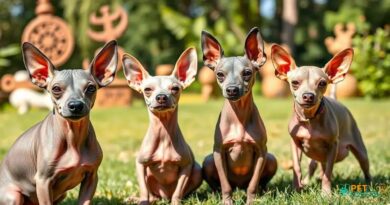What is Kinkajou
What is Kinkajou?
The kinkajou, scientifically known as Potos flavus, is a small, nocturnal mammal native to the rainforests of Central and South America. Often referred to as the “honey bear,” this unique creature is closely related to raccoons and is known for its playful and curious nature. Kinkajous are primarily arboreal, spending most of their lives in trees, where they are adept at climbing and leaping between branches.
Physical Characteristics of Kinkajous
Kinkajous have a distinctive appearance, characterized by their large, round eyes, a long prehensile tail, and a soft, dense coat of fur that ranges from yellowish-brown to gray. Adult kinkajous typically weigh between 3 to 10 pounds and measure about 16 to 24 inches in length, excluding their tails, which can be as long as their bodies. Their unique physical traits make them well-suited for their arboreal lifestyle.
Diet and Feeding Habits
Kinkajous are primarily frugivorous, meaning they predominantly eat fruit. They have a particular fondness for ripe fruits, especially figs, and are known to consume nectar, honey, and insects as well. Their long, flexible tongues allow them to reach deep into flowers to extract nectar, making them important pollinators in their ecosystems. This diverse diet contributes to their role in seed dispersal and maintaining the health of their habitats.
Behavior and Social Structure
Kinkajous are social animals that often live in small family groups or pairs. They are known for their playful behavior, which includes climbing, swinging, and chasing each other through the trees. These mammals are primarily nocturnal, becoming active at night when they forage for food. Their vocalizations, including whistles and barks, play a crucial role in communication within their groups.
Habitat and Distribution
Kinkajous inhabit tropical rainforests, cloud forests, and secondary forests, where they can find plenty of fruit and flowering plants. Their range extends from southern Mexico through Central America and into the Amazon rainforest in South America. Deforestation and habitat loss pose significant threats to their populations, making conservation efforts essential for their survival.
Reproduction and Lifespan
The breeding season for kinkajous typically occurs during the rainy season, with females giving birth to a single offspring after a gestation period of about 120 days. The young are born blind and helpless, relying entirely on their mothers for care. Kinkajous can live up to 20 years in captivity, although their lifespan in the wild is often shorter due to predation and environmental factors.
Conservation Status
Currently, kinkajous are classified as “Least Concern” by the International Union for Conservation of Nature (IUCN). However, their populations are declining due to habitat destruction, hunting, and the illegal pet trade. Conservation efforts, including habitat protection and public awareness campaigns, are crucial to ensure the survival of this fascinating species.
Relationship with Humans
Kinkajous have gained popularity as exotic pets due to their playful nature and unique appearance. However, potential owners should be aware of the challenges associated with keeping kinkajous, including their specific dietary needs and social requirements. In the wild, kinkajous play an important role in their ecosystems, and their conservation is vital for maintaining biodiversity.
Fun Facts about Kinkajous
Did you know that kinkajous have a special adaptation that allows them to rotate their ankles 180 degrees? This unique feature enables them to climb down trees headfirst. Additionally, kinkajous are known to have a sweet tooth, often seeking out honey and sugary fruits. Their playful antics and curious behavior make them a delight to observe in their natural habitat.




